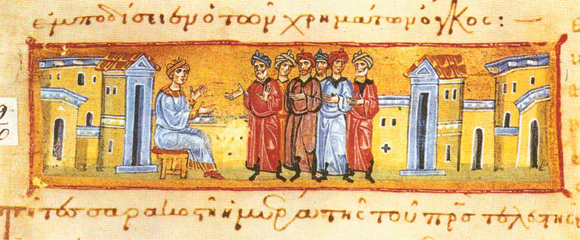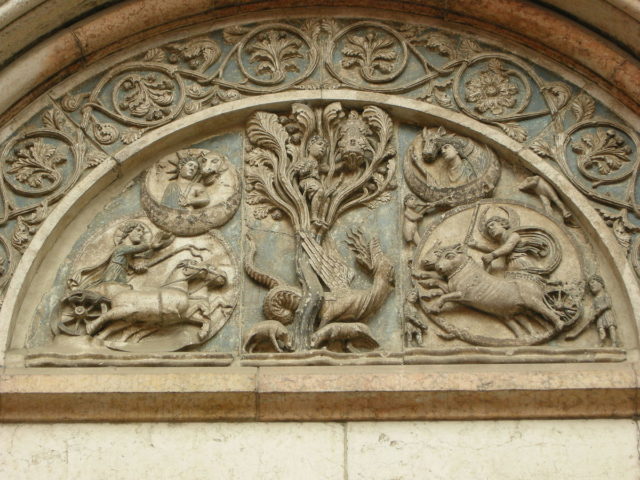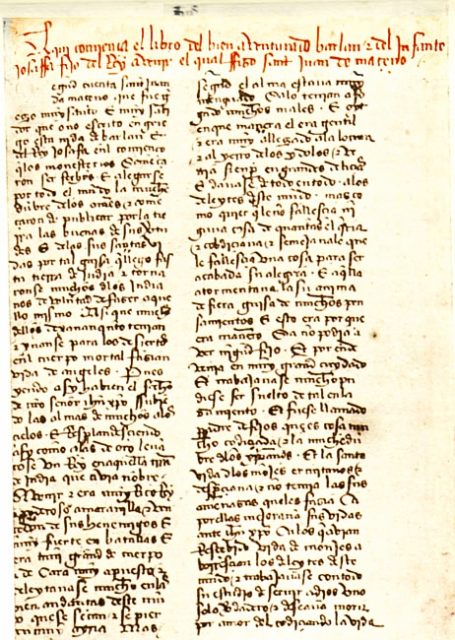There are many examples in the history of religion, or literature in general, where a motif or a tale travels cross-cultures and changes, deforms or evolves into something that it did not connote to in the first place. Such is the case of Barlaam and Josaphat, two legendary Christian martyrs and saints, who, it turns out, were based eventually on the life of the Buddha.
According to legend, King Abenner or Avenier in India persecuted the Christian Church on his territory, founded by the Apostle Thomas. When astrologers had predicted that it would be his own son who would convert to Christianity one day, Abenner had the young prince Josaphat isolated from any influences on that matter. Despite that, the young prince met the hermit Saint Barlaam and became a Christian. Josaphat preserved his new faith even in the face of his father’s anger and faith. Consequently, King Abenner also converted, turned over his throne to his son, and retired by going to the desert and becoming a hermit. Josaphat later resigned too and retreated with his old teacher Barlaam.

“Long attributed to the eighth-century monk and scholar, St. John of Damascus, Barlaam and Josaphat was translated into numerous languages around the world. Philologists eventually traced the name Josaphat as a derivation from the Sanskrit bodhisattva, the Buddhist term for the future Buddha, highlighting this text as essential source reading for connections between several of the world’s most popular religions,” writes also the College of Literature, Science, and Arts at the University of Michigan.
The ancient Buddhist text most likely dates back to the second through to the fourth century. The Sanskrit word Bodhisattva was first changed to Bodisav in Persian texts in the 6th or 7th century, then to Budhasaf or Yudasaf in an 8th century Arabic document. In the 10th century, in Georgia, the name appears as Iodasapah and from there was adopted in Greece as Iosapah, and in Latin under Iosaphat or Josaphat.
The two figures entered the Eastern Orthodox calendar with a feast day on 26th August, and in the Roman Martyrology in the Western calendar as “Barlaam and Josaphat” on 27th November. They were, however, never formally canonized by the church.
The majority of scholars who have researched how the narrative has traveled cross-borders, agree and point out to errors in prints that have mistranslated the first versions.

One of the first Christianized adaptations of the story is the Georgian epic “Balavariani” issued in the 10th century. Then, a Georgian monk translated the story into Greek and from there it was translated into Latin. That’s how the story got ultimately popular in Western Europe as “Barlaam and Josaphat”. Other accounts also suggest that the Greek legend of “Barlaam and Ioasaph” is attributed to the aforementioned 7th century John of Damascus.
Nevertheless, the story was widely read in the Middle Ages, almost in each Western European country. The tale appeared in such works as the “Golden Legend”, a popular late medieval Europe collection of hagiographies, written by the Italian chronicler and archbishop of Genoa, Jacobs de Voragine. A scene there that involves three caskets appears in Shakespeare’s “The Merchant of Venice” too.

The misinterpretation behind the saint’s figure was largely debunked by Wilfred Cantwell Smith, a Canadian professor of comparative religion, who from 1967 to 1973 was director of Harvard’s Center for the Study of World Religions.
As one of the field’s most eminent and influential figures, he traced the story of Barlaam and Josaphat from the Mahayana Buddhist text, and how it found the way into Muslim cultures as the Arabic Book of Bilawhar and Yudasaf.
